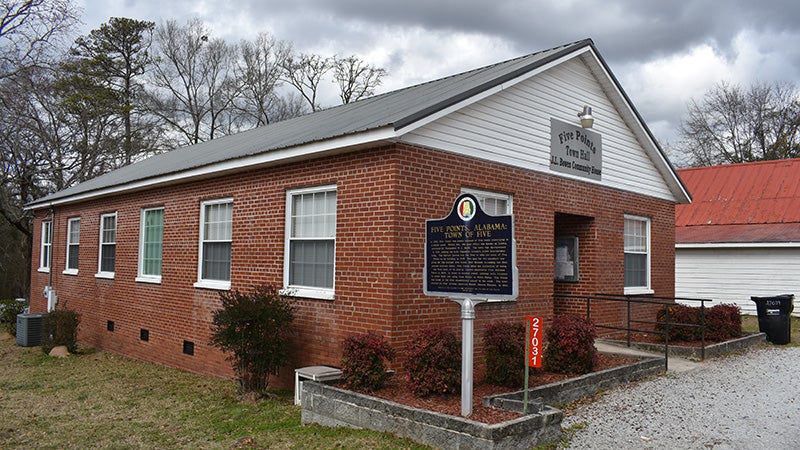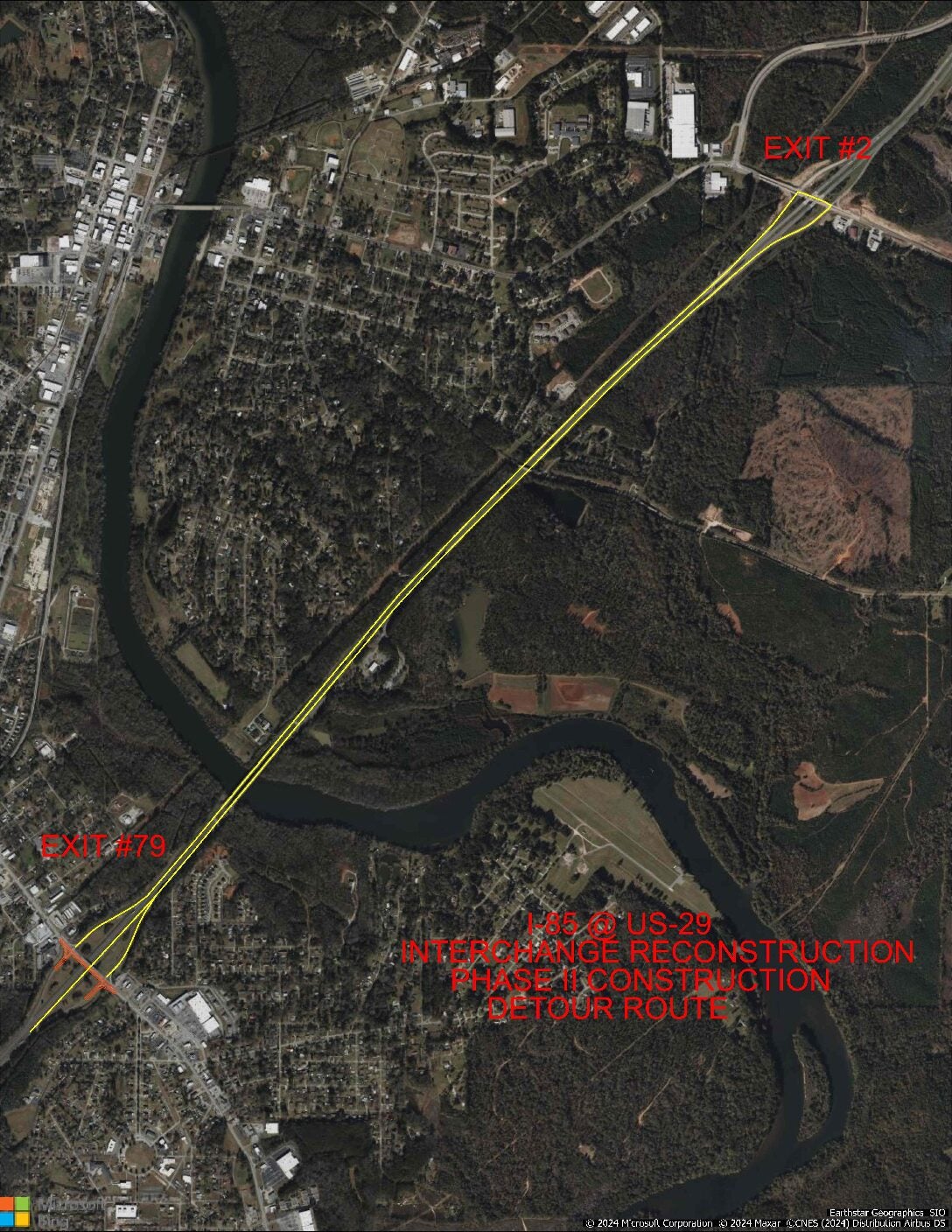WHAT’S IN A NAME? Towns of Fredonia, Cusseta, Five Points
Published 3:00 pm Saturday, February 25, 2023
|
Getting your Trinity Audio player ready...
|
Under state law, there’s a difference between a city and a town in Alabama. According to the State Code (1975), a city is any incorporated entity with a population of 2,000 or more people; a town is an incorporated entity with a population of less than 2,000 people. By this standard, there are three cities and three towns in Chambers County.
According to the 2020 Census, Valley is the largest city in Chambers County with 10,551 people, Lanett has an estimated population of 7,120 and the county seat of LaFayette is listed at 2,588 people.
Fredonia is the largest town in Chambers County with 226 people, Cusseta has 151 residents and Five Points 158.
Few small towns have the kind of history Fredonia has. It was the most thriving place in the county when Chambers County was formed in 1833. The county’s first permanent settler, Nimrod Doyle, came to the area on an old Indian horse path. He and his Creek wife built a trading post along the path where it forded Oseligee Creek not far from the present site of Fredonia. The 1832 Treaty of Cusseta assigned the land where the Fredonia crossroads is today to Muskogee Doyle, Nimrod’s daughter. She gave it back to her dad, who gifted it to a man named John Hurst, who built a store on the land. At one time, what’s now Fredonia was known as Hurst’s Store.
The name later became “Free donia” to get it across that land was there for settlement. It made those looking for land to think in terms of a free donation.
The Treaty of Cusseta reserved much land in east Alabama (including Chambers) as a permanent home for the Creeks.
A man named Ethan Stroud was especially gifted in acquiring land, such as modern day-Chambers County. Early arriving settlers in northern Chambers County were very happy to buy land from him and to name a crossroads town for him.
From the early 1830s till the Civil War, Fredonia was the educational and trade center for northeast Chambers County. The Alabama Legislature established the Southern Military Academy in Fredonia. The first Methodist church in the county was (and still is) in Fredonia. Lots of businesses sprang up, including a jug factory, blacksmith shop, a tannery, hotels, taverns and even a temperance house. A growing village was incorporated as an Alabama town on Sept. 29, 1853.
Fredonia has two school buildings still standing that were built in 1919. One is on the main north-south road through town and is maintained as the Fredonia Community Clubhouse. It hosts meetings of the town council and the Fredonia Heritage Association. The New Hope Rosenwald School is located on the road between Fredonia and LaFayette. It’s listed on the National Register of Historic Places.
Like Fredonia, Cusseta has a history that goes back to Chambers County’s earliest period of the 1830s. The town gets its name from a nearby Creek village on Osanippa Creek. Cussetaw was the home of Tuckabatchee Harjo, a well-known Creek chief in east Alabama.
The earliest settlers included locating agent Dr. Robert W. McHenry and his brother, J.D.R. McHenry, (they ran the settlement’s first trading post), John J. Williams and Major John Phipps, whose Creek wife ran a tannery in what is now Lanett. Her name was E Noach Ki Ah.
Williams ran a trading post in the growing village of Cusseta.
When a second Creek War erupted in 1836, a fort was built in Cusseta. It stood until the recent past. Clearly, its rough-hewn log timbers were cut with broad axes.
The soils along the Osanippa valleys were fertile, and speculators competed for land acquisitions.
Cusseta enjoyed its greatest period of prosperity in the decade before the Civil War. A railroad heading north from Montgomery to the Georgia state line came right through Cusseta in 1851. A line heading south of Atlanta to West Point made it to the Alabama line in 1854. Having a railroad brought a wave of excitement to the town. Many thought things would soon get really big for Cusseta. It was known that the Central of Georgia Railroad was going to extend a line from Columbus in a northwest direction toward what would one day become the City of Birmingham.
Big towns grow from where two railroads cross. That didn’t come to east central Alabama until after the Civil War, and it came to the new town of Opelika, not Cusseta,
Cusseta is the birthplace of a famed lawman of the Old West. Pat Garrett was born here in 1850. His family moved farther west when he was a child. He grew up in Louisiana and Texas before eventually making his way to the New Mexico territory. He was the sheriff of Lincoln County during the famed range wars. In the summer of 1881, he killed famed gunfighter William Bonney, better known as Billy the Kid. Many years later, Garrett would go down at the hand of a gun. He was killed in 1908 over a land dispute. He was buried in Lee County, New Mexico. Garrett was portrayed by Glenn Corbett in a 1973 movie, “Pat Garrett & Billy the Kid,” and by Ethan Hawke in a 2019 film, “The Kid.”
Incorporated in 1915, Five Points is Chambers County’s oldest continuously operating town. (Fredonia and Cusseta were incorporated much earlier but each became dormant over the years and only recently resumed being towns with active governments). The town was first named Five Points in 1885 because five roads converged here. It had previously had the name of a Biblical town, Lystra, which is mentioned six times in the New Testament. It was there that the Apostle Paul met Timothy. Lystra was located in what historians commonly call Asia Minor, or modern-day Turkey.
Five Points has a number of notable firsts in its history. It was the first town of its size to receive electricity from Alabama Power in 1925. To take this big step forward, townspeople put up poles from Stroud to White Plains. Five Points is the location of the first consolidated high school in Alabama. It was built on a hill approximately a half mile east of US 431. Five Points High was erected in 1916. It was an imposing brick building with two floors above a full basement and a large auditorium that would hold up to 400 people. It was on an 18-acre campus and was the only rural school in Alabama with its own electrical and steam-generating plant and water works. This building was replaced by a one-story building in 1939. That building was destroyed by fire in 1974 and was replaced by the present building.
Mitch McConnell, the minority leader of the U.S. Senate, was born in Alabama and his family lived in Five Points while he was undergoing treatment for polio at the Roosevelt-Warm Springs Institute for Rehabilitation in Warm Springs, Georgia. This treatment at an early age may have saved him from being disabled for the rest of his life.
Another first for Five Points is that it had the first African-American woman elected mayor of a town or city in Chambers County. Geneva Bledsoe was first elected in 1992.
A recent first for Five Points is it now has a Dollar General store. Five Points is the first Chambers County town to have one. Among the cities, Valley has two Dollar Generals, and LaFayette has one. Huguley has one, too, but it is not incorporated.





